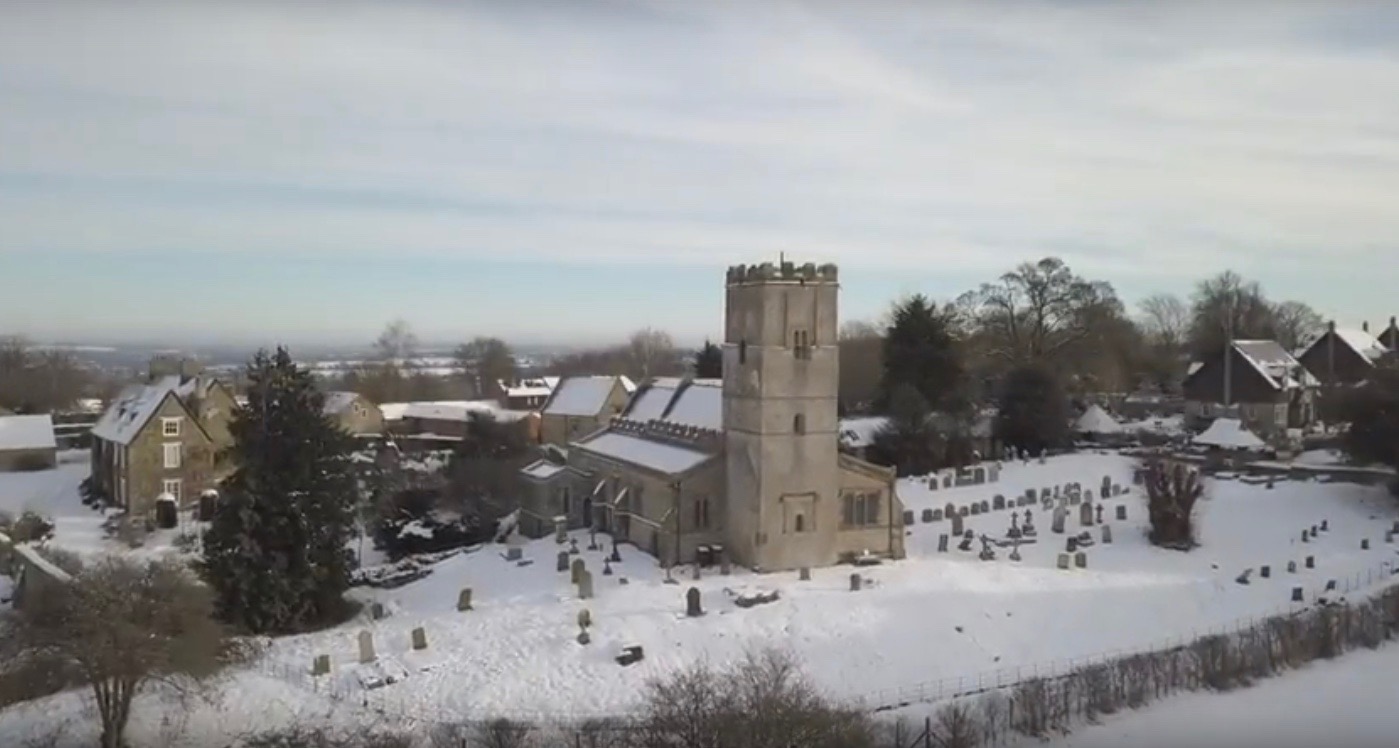

St Michaelís Church has enjoyed this special place on a windy hill with a fine view for something like two millennia. Even in Roman times a Temple is thought to have existed here or nearby.
The Saxon Church with its familiar tower was built in the middle ages and at some point in the 19th century it was enlarged to this wonderful space we have today.
The names and likenesses of many of the benefactors that have supported this church have been recorded, often by great artists of their day. This is a brief description of who they were, and a posthumous word of thanks to them.
The Crawleys
The Crawley family were Rectors of Stowe for 167 years. Dr John Lloyd Crawley became Rector in 1754 and his descendent, Henry Hugh Crawley died in 1921. They did an enormous amount of good for this Church, Stowe Nine Churches parish and Nether Heyford where they were also Rectors.
This portrait of Dr John Lloyd Crawley, was painted by William Hogarth in 1734; it now hangs in the Paul Mellon collection of British Art at Yale University, Connecticut.
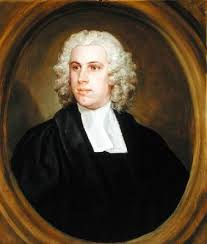 The
Crawleys were relatives of the Gibbs family and apart from being wealthy they
were also very religious and philanthropic. The Gibbs lived at Tyntesfield,
Somerset, now a National Trust property, the Crawleys at Flaxley Abbey in
Gloucester.
The
Crawleys were relatives of the Gibbs family and apart from being wealthy they
were also very religious and philanthropic. The Gibbs lived at Tyntesfield,
Somerset, now a National Trust property, the Crawleys at Flaxley Abbey in
Gloucester.
The Gibbs traded overseas through the port of Bristol, eventually becoming merchant bankers; they sold their business to HSBC in 1981. Both families were Anglo- Catholics and heavily involved in the Oxford Movement along with Newman, Pusey and Keble.
St Michaelís is incredibly fortunate to have this association since the Crawleys managed to finance the restoration of the church in 1860. In fact, this was more than a restoration, it was a wholesale extension and re-modelling. All done by a famous London Architect, Philip Charles Hardwick, who designed many Victoria buildings including the Albert Dock in Liverpool and the now demolished Euston station arch.

The Crawleys, no doubt with help from the Gibbs, also built St Jamesís Church in Upper Stowe, a chapel of ease, and extensively re-modelled the church of St Peter and St Paul, Nether Heyford.
Rev Charles Crawley lived nearby in Wyndham House, then known as the Rectory, until his death aged 92nd year.
The Sons of the Clergy
In 1714 the Stowe estate was sold for the first time. Lard Walton the last owner had died in debt and so funds had to be raised. It was bought by the Corporation of the Sons of the Clergy, a charitable organisation which still exists. They received substantial funds from the estate of Dr Thomas Turner, £20,000, equivalent to c. £33 million today. The estate is thought to have extended to some 3,500 acres and included land farms and cottages in Stowe, Farthingstone, Nether Heyford and Adstone. The income from these tenanted farm units was used to benefit members of the clergy who were living in restrained circumstances. The charity had been set up for this purpose in 1655 when Cromwellís Commonwealth had made church livings illegal.
The whole property was sold at auction some 200 years later in 1916 by Bidwells. A copy of the sale prospectus exists, it is full of interesting fact including the names of all the fields that comprised the estate. The large fields immediately to the north of the church was known as Rye Hill and Ewe Ground whilst the new lake was called The Lawn.
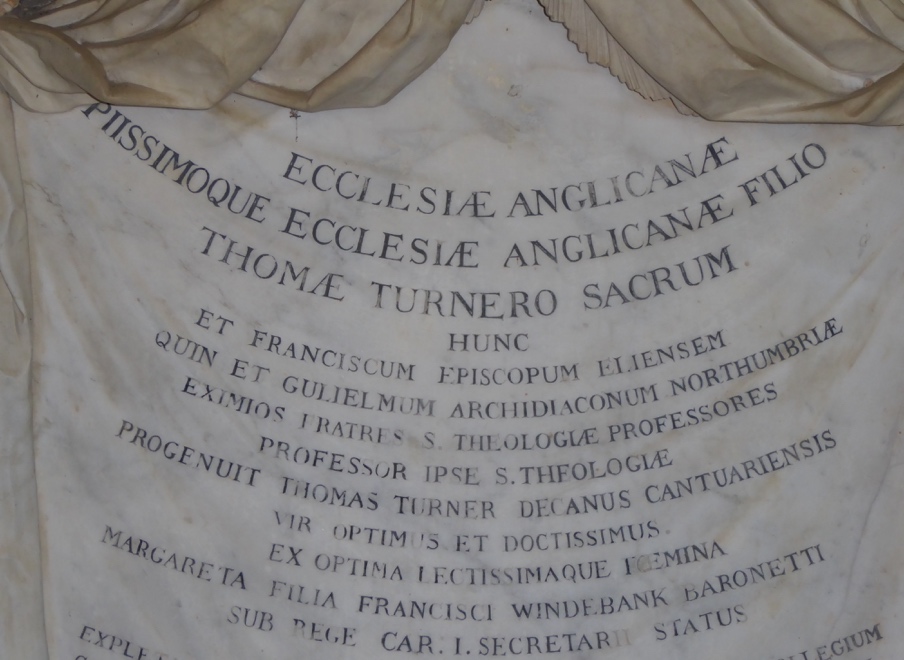
The monument to Dr Turner. in St Michaels (to the rear of the organ).
During their tenure the Sons of the Clergy will have acted as good landlords by improving farm buildings, planting woodland and generally looking after the wellbeing of the local populace. Dr Thomas Turner, who is unlikely ever to have visited this place, was the generous enabler of these good works.
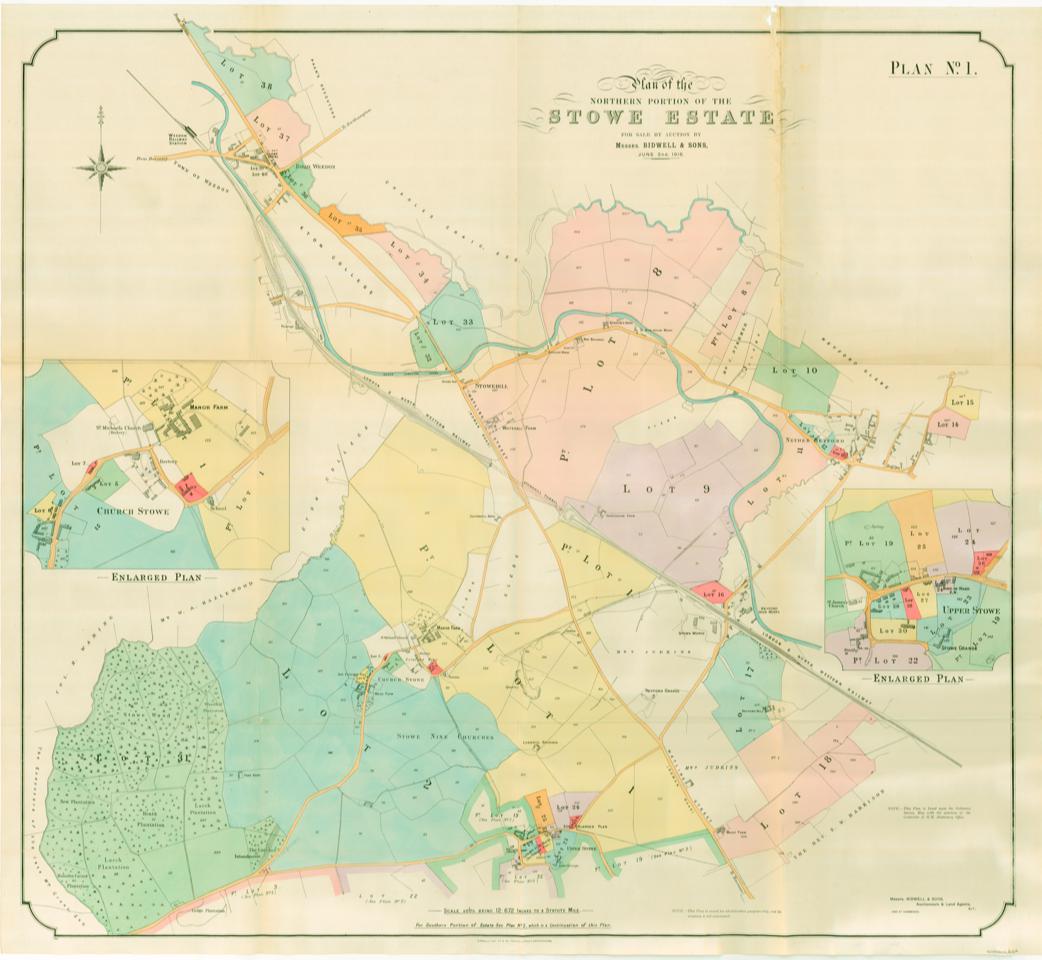
Map showing part of the Stowe estate sold by the Sons of the Clergy in 1916.
Lord Danby
Henry Danvers, Earl of Danby, inherited the Manor from Lady Carey, whose tomb is the finest piece of sculpture in the church.
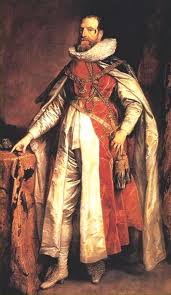
Danby had his portrait painted by Van Dyke. It now hangs in the Hermitage Museum St Petersburg. A dueling scar to his left cheek is evident, it is filled with a lead prosthetic.
Of more importance is the restoration work to the Church that he made in 1639 whilst extending the Manor. The extent of this work is now concealed by work carried out by the Crawleys. It may have been to the full extent of the present footprint. It is certain that as a result of the church being extended eastwards, the field footpath to Weedon was moved to run down the western side.
Apart from his work at Stowe, Danvers gave the land on which Oxford Botanic Gardens is established. His son John had a similar botanical connection, he gave the land on which the original Chelsea Physic Gardens was established by Chelsea Embankment.